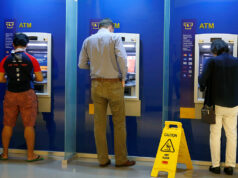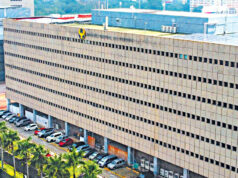BSP moratorium on fees affecting ATM density

THE PHILIPPINES is still behind its ASEAN neighbors in terms of automated teller machine (ATM) availability, according to estimates from the Bankers Association of the Philippines (BAP).
Bankers said the Bangko Sentral ng Pilipinas’ (BSP) moratorium on ATM transaction fees “held back” their performance in servicing and expanding their reach.
With 21,000 ATMs for 58 million cardholders throughout the country or about 20 ATMs per capita of 100,000 card users, the Philippines still has a gap to fill compared to other countries’ ATM per capita such as Thailand’s 94, Singapore’s 49, Malaysia’s 45, and Indonesia’s 40 ATMS for 100,000 cardholders, respectively.
The BAP said the growth rates of banks’ ATM deployments slowed to an average of 6.4% since 2013 from 13% in the preceding years.
“The moratorium on ATM transaction fees since 2013 has held back banks optimal performance in servicing and expanding their reach,” BAP said in a statement on Monday.
According to the group, lenders shoulder expenses from operational activities such as loading, servicing, complaints handling, reconciliation, software, capacity expansion and security, apart from those incurred from physical ATM deployments.
“The number of cardholders has been increasing for the past six years. Banks need to keep up with the maintenance and innovation of ATMs, as well as expansion of ATM network to accommodate the surge of ATM usage,” BAP Managing Director Benjamin P. Castillo said.
“We will collaborate with the regulators to ensure that ATM fees remain market-driven and reasonable, while continuing to provide convenience and security to the banking public,” Mr. Castillo said.
The BSP has already approved the applications of some banks for up to a P3 increase in ATM fees when using cards from a different card provider.
Vicente T. de Villa III, managing director at the BSP’s Financial Technology Sub-Sector, previously said ATM fees imposed by lenders are around P11 to P15 per transaction. — L.W.T. Noble



